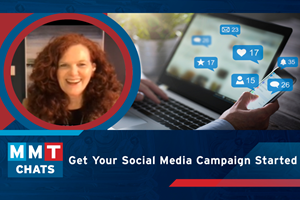Price vs. Cost: Why It’s Important to You and to Your Customers
Your marketing message is more important than ever—clues to what that is can be found in price and cost, and in your customers’ behaviors.
Buyers everywhere are finding it more and more difficult to navigate the global manufacturing ecosystem. They are discovering unexpected challenges in managing extended supply chains, particularly in sustaining complex, highly-technical products, parts and assemblies. These challenges manifest themselves as unexpected supply chain disruptions that force them to quickly adjust to minimize those disruptions and maintain service to support their customers and own manufacturing business initiatives.
Survey Says
In the most recent MFGWatch survey of North American manufacturing buyers and procurement specialists, 38% indicated that they had experienced a serious supply chain disruption within the previous 3 months that caused them to research and select alternative sources. This is an extraordinary number, as more than one-third say they are forced to reexamine sources they believed to be reliable.
Also, buyers consistently indicate the following supply chain risks as concerns for supporting their businesses:
- Supplier Failure
- Volatile/Rising Labor Costs
- Commodity Price Volatility
- Supplier Quality Failures
- Energy Cost Volatility
- IP Infringement
- Volatile Transportation Costs
- Supply Chain Security Breaches
- IT Risks
Opportunities
Each of these risks represents opportunities for NA SMMs, since buyers must usually act to correct these disruptions by finding more reliable, competent sources. And when they encounter these disruptions, time is usually critical to minimize their impact.
Buyers, of course, use the Web as a primary tool to locate potential supply chain partners who offer acceptable solutions to these problems. Thirty-eight percent of them. The pressures of managing extended, global supply chains place enormous pressure on procurement and buying managers to see supply chain dependability as important as mere “price,” since the costs of managing those complex chains and responding to disruptions are very expensive.
When under this level of duress, your prospects are very receptive to solutions that your business may offer that they hadn’t considered.
True Costs
Over the years, buyers and procurement managers have become somewhat disconnected from the design and engineering elements of their organizations. The allure of low-cost countries, with their lower labor rates and less regulation, has resulted in price as a stronger factor in measuring a supply chain manager’s success.
Finding a source that reduces the cost of a tie-rod from $13.24 per part to less than $10.00 is seen in myopic organizations as a huge win. But along with these lower prices are also less obvious costs: the costs of extended transportation lines (fuel, logistics), inventory management, supplier management, quality assurance and maintainability, currency fluctuations and other factors that cause disruptions in supply chains. And disruptions = time = money.
Today’s NA manufacturer must also use its Web presence and communications with prospects and current customers to regularly represent and revisit the issues of Total Landed Costs (TLC).
The easiest way to differentiate price vs. cost in a buyer’s terms is to consider the following two definitions:
- Price reduction is predominately a result of negotiation, with specific margins as the sole litmus test.
- Cost reduction is a more complex equation, which must consider total cost of ownership: spend, quality, value and other risk-reward qualities necessary for stable and sustainable supply chain management (total landed cost).
Developing business strategies that move today’s North American manufacturing business toward products and markets away from “price-centric” and toward more “cost-considerate” business models is crucial to surviving in the coming decade.
Sell It
But regardless of your company’s vision or strategies, enunciating your capabilities in terms of cost rather than price represents your greatest opportunity to influence buyers’ perception of your value.
It’s up to you to advise current and prospective customers of the difference—through your Web site, your sales teams, messaging and face-to-face.
To quote a colleague, “If you’re not unique, you’d better be cheap. You think you’ve got problems with (price)? (Price) is for losers. (Price) is what you do when you can’t figure out how to add value.”
And that’s the true difference between Price and Costs—the value you bring to the table.
This article is the second of a five-part series on business developments affecting North American moldmakers and manufacturers, and how best to capitalize on emerging trends to grow and redefine manufacturing businesses.
Related Content
MMT Chats: Simple Steps to Get Your Social Media Campaign Started
MoldMaking Technology Editorial Director Christina Fuges catches up with Gail Now’s Chief Curiosity Officer Gail Robertson. We talk about the importance of using the curiosity tool to tell your stories as part of a marketing strategy that includes social media. This episode is brought to you by ISCAR with New Ideas for Machining Intelligently.
Read MoreThe Role of Social Media in Manufacturing
Charles Daniels CFO of Wepco Plastics shares insights on the role of social media in manufacturing, how to improve the “business” side of a small mold shop and continually developing culture.
Read MoreSodick Partners with Merrifield Machinery Solutions in Eastern Michigan
Merrifield is welcomed under the umbrella of Sodick machine tool distributors, bringing customers more than 15 years of experience in machine tool sales and support.
Read MoreMMT Chats: Mold Builder Shares “Raw and Real” Social Media Strategy
MoldMaking Technology Editorial Director Christina Fuges sits down with Murphy Forsyth, GM – Injection Molding and Director Of Marketing for Zero Tolerance LLC in Clinton Township, MI.
Read MoreRead Next
Reasons to Use Fiber Lasers for Mold Cleaning
Fiber lasers offer a simplicity, speed, control and portability, minimizing mold cleaning risks.
Read MoreHow to Use Strategic Planning Tools, Data to Manage the Human Side of Business
Q&A with Marion Wells, MMT EAB member and founder of Human Asset Management.
Read MoreHow to Use Continuing Education to Remain Competitive in Moldmaking
Continued training helps moldmakers make tooling decisions and properly use the latest cutting tool to efficiently machine high-quality molds.
Read More


















